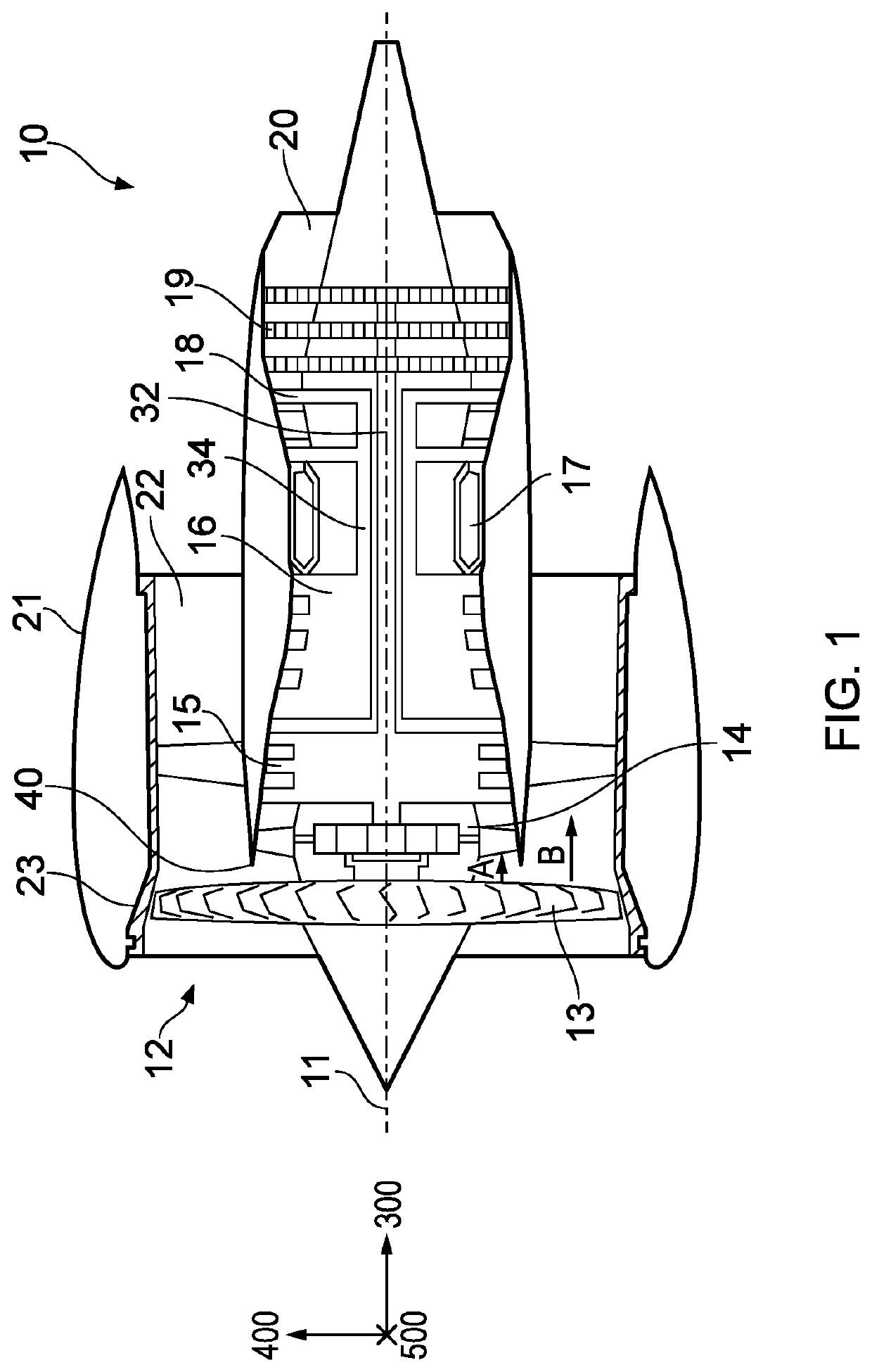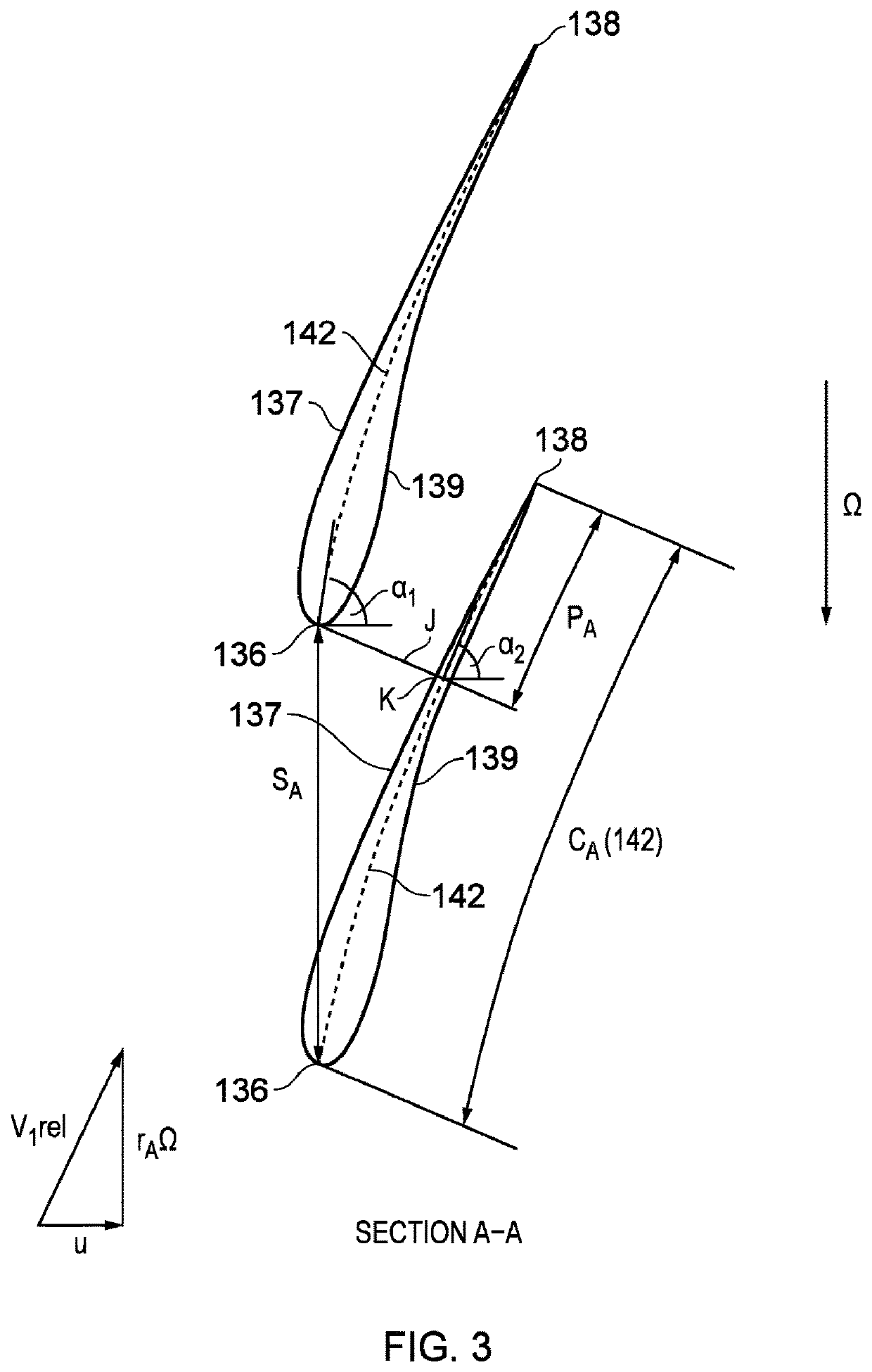Gas turbine engine
a technology of gas turbine engines and turbine blades, which is applied in the direction of engines, machines/engines, mechanical equipment, etc., can solve the problems of unsteady aerodynamic forces on the blade row itself, other aspects of engine performance may be compromised, and vibrations may decay in amplitud
- Summary
- Abstract
- Description
- Claims
- Application Information
AI Technical Summary
Benefits of technology
Problems solved by technology
Method used
Image
Examples
Embodiment Construction
[0083]With reference to FIG. 1, a gas turbine engine is generally indicated at 10, having a principal and rotational axis 11. The engine 10 comprises, in axial flow series, an air intake 12, a propulsive fan 13, a gearbox 14, an intermediate pressure compressor 15, a high-pressure compressor 16, combustion equipment 17, a high-pressure turbine 18, a low-pressure turbine 19 and an exhaust nozzle 20. A nacelle 21 generally surrounds the engine 10 and defines the intake 12. The nacelle 21 may be, or may comprise, a fan containment case 23. The nacelle 21 and the fan case 23 may be separate components.
[0084]The gas turbine engine 10 works in the conventional manner so that air entering the intake 12 is accelerated and compressed by the fan 13 to produce two air flows: a first air flow A into the engine core and a second air flow B which passes through a bypass duct 22 to provide propulsive thrust. The first and second airflows A, B split at a generally annular splitter 40, for example a...
PUM
 Login to View More
Login to View More Abstract
Description
Claims
Application Information
 Login to View More
Login to View More - R&D
- Intellectual Property
- Life Sciences
- Materials
- Tech Scout
- Unparalleled Data Quality
- Higher Quality Content
- 60% Fewer Hallucinations
Browse by: Latest US Patents, China's latest patents, Technical Efficacy Thesaurus, Application Domain, Technology Topic, Popular Technical Reports.
© 2025 PatSnap. All rights reserved.Legal|Privacy policy|Modern Slavery Act Transparency Statement|Sitemap|About US| Contact US: help@patsnap.com



